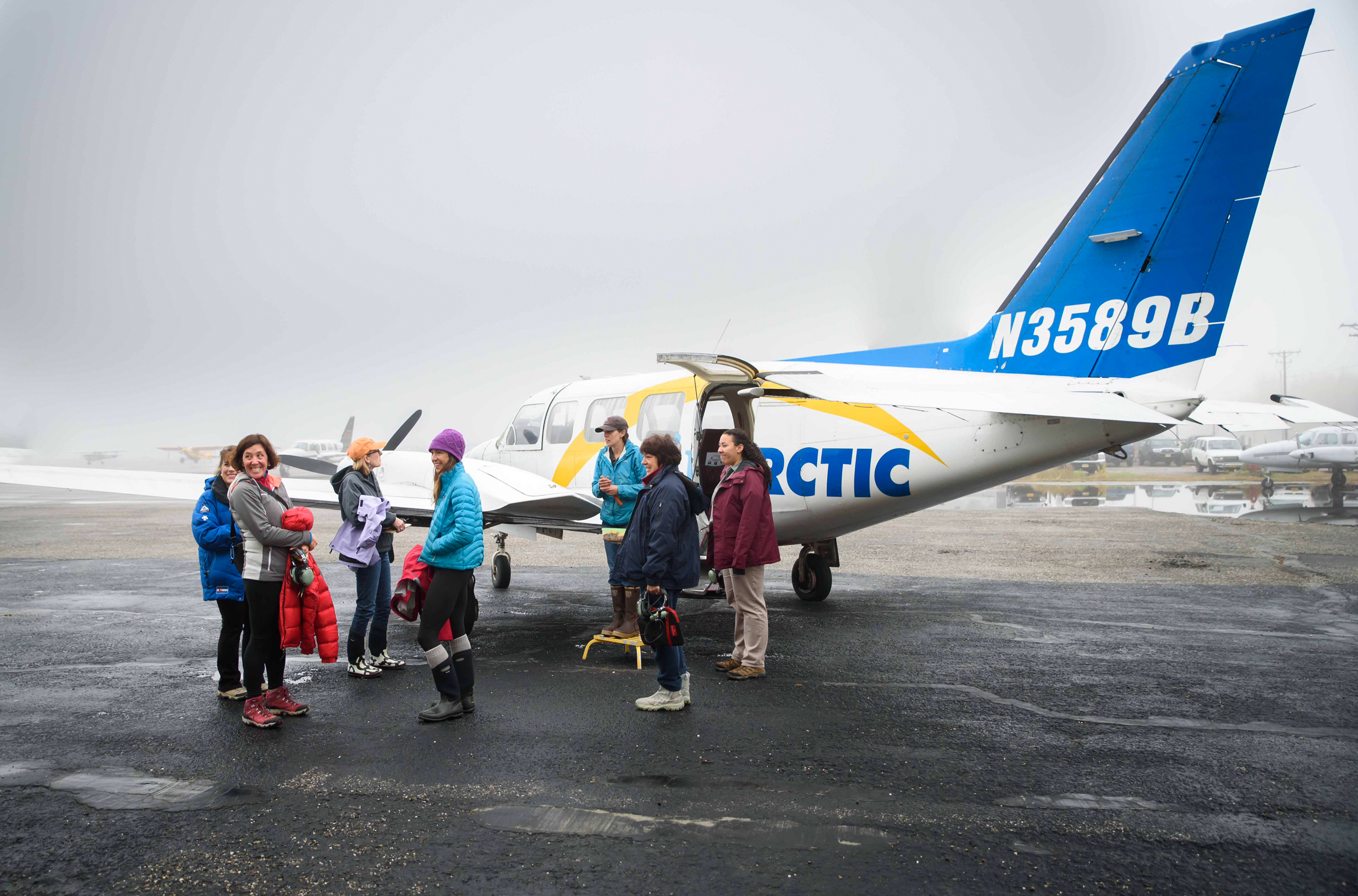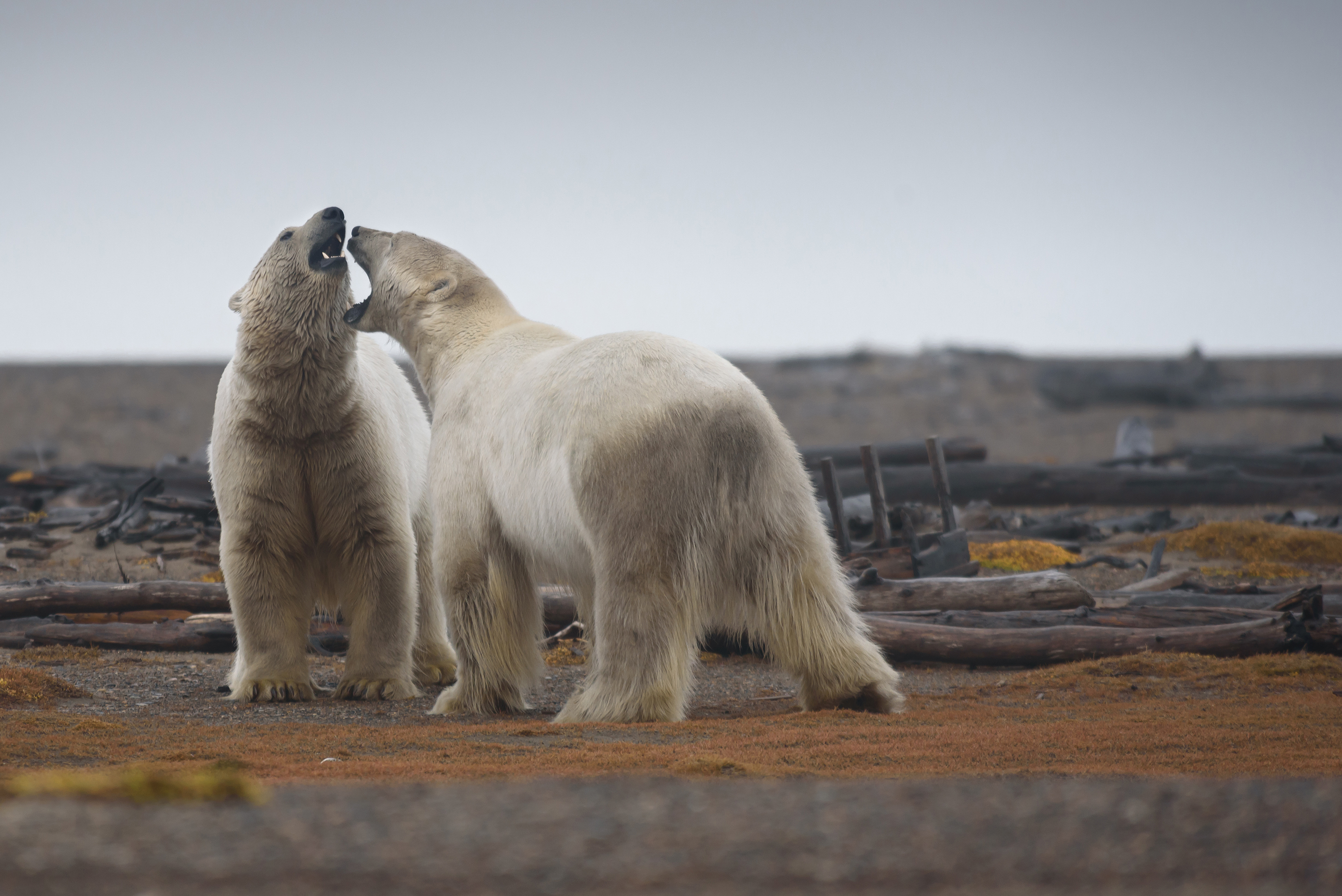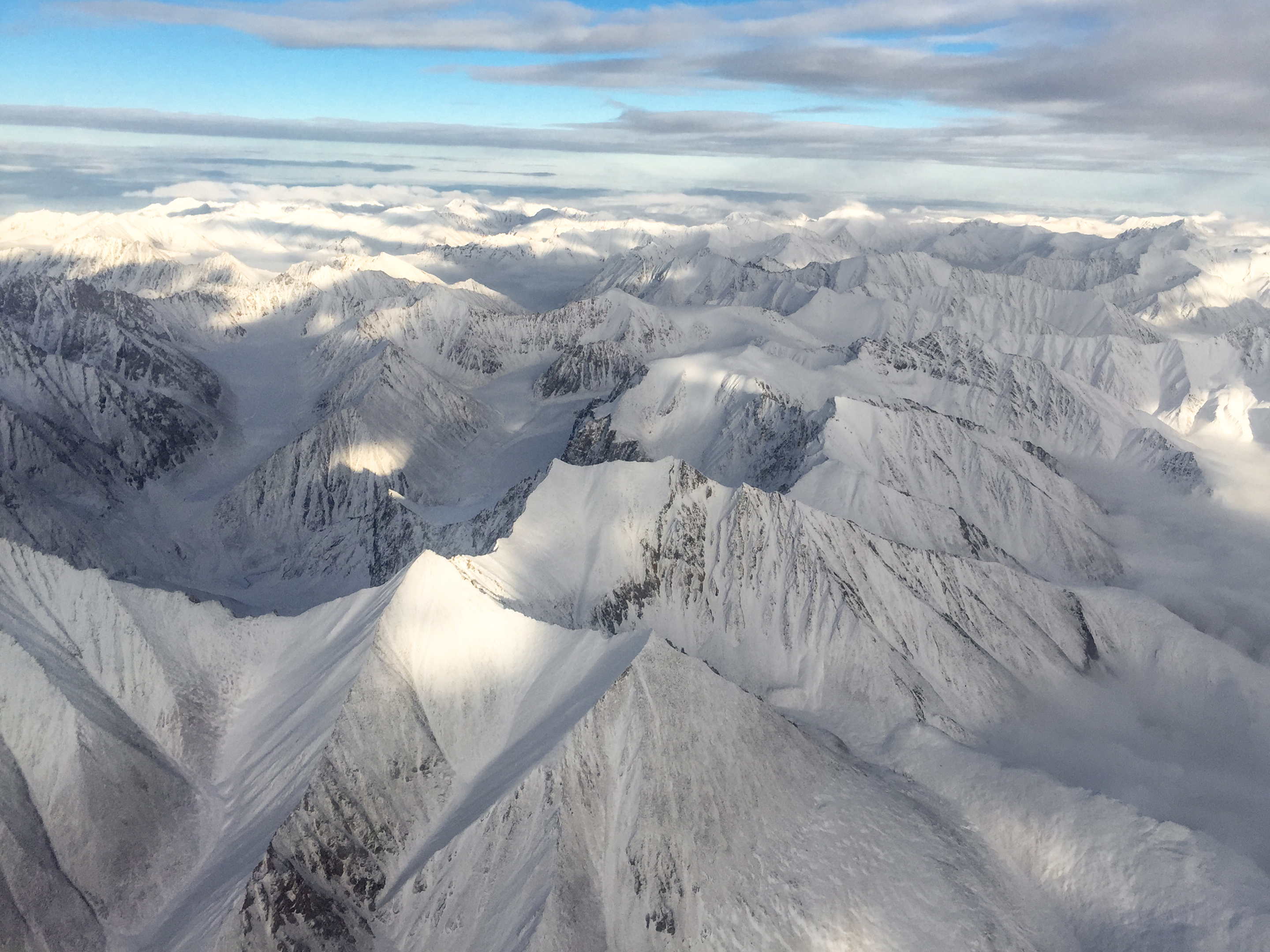Nose-to-nose with a polar bear? In Alaska, that’s just a normal day.
Clouds roiled on the horizon, saturated and spitting as six of us waited in the sterile anteroom of the Northern Alaska Tour Company’s aviation office in Fairbanks. A giant map of the state hung on the wall, and my gaze returned to it repeatedly. There we were, landlocked in Alaska’s center. Further north, beyond the massive Yukon River valley, was Deadhorse, an oil town at the mouth of Prudhoe Bay. East of Deadhorse, cleaving to the landmass below it and perched on the blue Beaufort Sea, was our destination: Kaktovik, the only occupied village in the Arctic National Wildlife Refuge. Here, polar bears converge every fall, waiting for sea ice to form so they can head out and live adrift throughout the winter.
Along with five friends, I was waiting for clearance to board a plane to Kaktovik and see polar bears up close. Ours was a day trip and tours on subsequent days were full, which meant that if we couldn’t fly out of Fairbanks, we wouldn’t get to Kaktovik. Autumn in Alaska is a volatile time of year, weather-wise. It can be sunny one day, snowy the next. In theory, that’s part of the excitement. But waiting for our flight clearance, I was cursing the rain gods.

Listed as “threatened” under the Endangered Species Act, polar bears have become a potent symbol of the impact of climate change. This is because they rely on sea ice for their survival – they need it to hunt seals, their primary prey – and climate change has contributed to the ice’s record low levels. A NASA researcher estimates that since 1979, more than 600,000 square miles of winter sea ice has melted away. Additionally, the ice that remains thinned by 65 percent between 1975 and 2012. As it has diminished, mortality among young and old polar bears has increased, and federal scientists have documented an overall population decline over the past 20 years.
[Eating the white bear: An Arctic icon’s place on the menu]
Polar bears traditionally congregate in and around Kaktovik, an Inupiat village of about 250 residents, while awaiting fall sea-ice formation. The bears are attracted to the village in part because of its annual bowhead whale hunt, allowed under native treaties. Residents may harvest up to three whales each year. Villagers rely on whale meat to subsist through the harsh winter, and they leave the blubber and other inedible (to humans) whale parts to satiate the hungry bruins. Counterintuitive as it may seem, the system has been working well for decades. Feed the predators and coexist. It’s only in recent years that a tourism industry has cropped up around the practice, with people like me willing to travel above the Arctic Circle for the chance to visit this forlorn and distant place and see the bears in their native habitat.

Some environmentalists warn that global warming could destroy polar-bear habitats and ultimately lead to the species’ extinction. It’s widely accepted that a loss of sea ice will force major adaptation upon the bears, and the population decline will probably continue. I hope we defy the gloomiest predictions, but I decided to take this fall trip in part because I wanted to see polar bears in the wild before it was too late.
Just when I was beginning to wonder whether our trip would be canceled because of the quixotic Fairbanks weather, the rain stopped and tour company manager Matt Atkinson rushed my group to the tarmac. We hustled into the Piper Navajo Chieftain piloted by Heather Zulkanycz, buckled up, taxied to the runway and, after getting clearance from air-traffic control, took to the sky.
Within minutes, civilization gave way to a lush and broad wilderness snaked with rivers. From cruising altitude, the muted colors of fall created a mosaic that mesmerized me until clouds descended and obliterated the view. After an hour of flying through fog, the gray broke to reveal an endless panorama of some of the steepest, most rugged mountains I’d ever seen. The Brooks Range. For a moment, I forgot all about the bears and lost myself in this landscape, equal parts dazzling and intimidating.
We refueled in Deadhorse and then flew another hour to Kaktovik, landing on the long, sandy strip that constitutes the Barter Island runway (I tried not to notice the ocean waves lapping at its edges.) Then Heather herded us into a waiting van and drove into town, a remarkably isolated outpost with buildings constructed of abandoned shipping containers.
Kaktovik is the opposite of a tourist trap. There are no souvenir shops, no ice cream stands. This is a town with only a few dirt roads and very few cars. Locals drive four-wheelers. We saw a post office and a fire station, but no grocery store. We ate a quick lunch at a cafeteria-like restaurant and then met up with Vejborn Reitan, our local guide, and set out to see the bears.
The first ones we saw were on the beach, en route from the airstrip to town. They were gathered around large chunks of blubber, refuse from a recently harvested whale. Three bears, their muzzles red with blood, ignored us as we slowed down to take a good look. But Vejborn moved us along. The locals are private about their traditions, reticent about discussing them and completely opposed to being photographed by outsiders.
[First a polar bear petted a dog. Then a polar bear did what polar bears do: Ate a dog.]
We tried to respect that, but it was hard. Seeing polar bears so close sent a jolt of energy through the van. We were mere feet from one of the biggest, fiercest animals in the world, and they were as oblivious to us as cows grazing in a field. Vejborn promised that we’d see a lot more, and we quickly realized he was right. They were everywhere. Some loafed in the fresh air, others gnawed on large blocks of blubber. We saw very little separation of people and bears; there were no fences separating wildlife areas from residential ones.
Vejborn ushered us onto a fishing boat and we set out on the ocean. Though high winds kept us close to shore, we saw even more bears. They were huge, with paws the size of a child’s head, clearly visible through binoculars. But . . . they were also cute. Even bears with bloody muzzles that had been gorging themselves on whale leftovers looked sweet and innocent and cuddly – easy to say with whitecaps and a boat’s hull between us. Add in the cubs, which were adorable, and my group of six was smitten.
Our five-hour tour was more visual than it was educational. At least that was my initial reaction – as an amateur naturalist, I’ve been on more than my share of nature tours. I expected an impassioned lecture from our guide on bear biology and climate change, and I thought I’d end the day armed with enough facts to feel like I could actually do something to help polar bears. (I realize the irony in this expectation; simply getting to Kaktovik burned significant amounts of fossil fuel, a major contributor to climate change.) But my time in Kaktovik left a much greater impression than a guide’s memorized spiel could have.
As I stepped off the boat and onto the rocky shore, heart beating with the thrill of sharing the air, the world, really, with wild polar bears, I understood in a visceral way the intricate complexity of that world. I also saw clearly how insignificant I was in the big picture. This is one reason I travel – to see how others live and to remind myself of my small role.
My life couldn’t be more different than those of the friendly residents of Kaktovik who waved as they passed us in 4x4s. Their weather is wind and rain, their skies gray and damp. And yet, despite their isolation, they are a vibrant community with traditions and a culture they’re not willing to exploit to appease the thousands of global tourists who flock to their village each fall.
During my brief stay, I ate the tastiest chicken soup of my life, complete with talons in the broth, and stopped in at the eclectic Waldo Arms, one of two ramshackle (but very popular, especially among wildlife tourists and film crews) hotels in the village. I experienced the thrill of flying in a bush plane with an unflappable pilot who managed to land smoothly even as 20-knot crosswinds swept across our path. In other words, I spent a day in the life in a remote Alaskan village perched on what felt like the end of the Earth and saw with my own eyes the animal that has come to symbolize one of the greatest man-made threats of all time.
